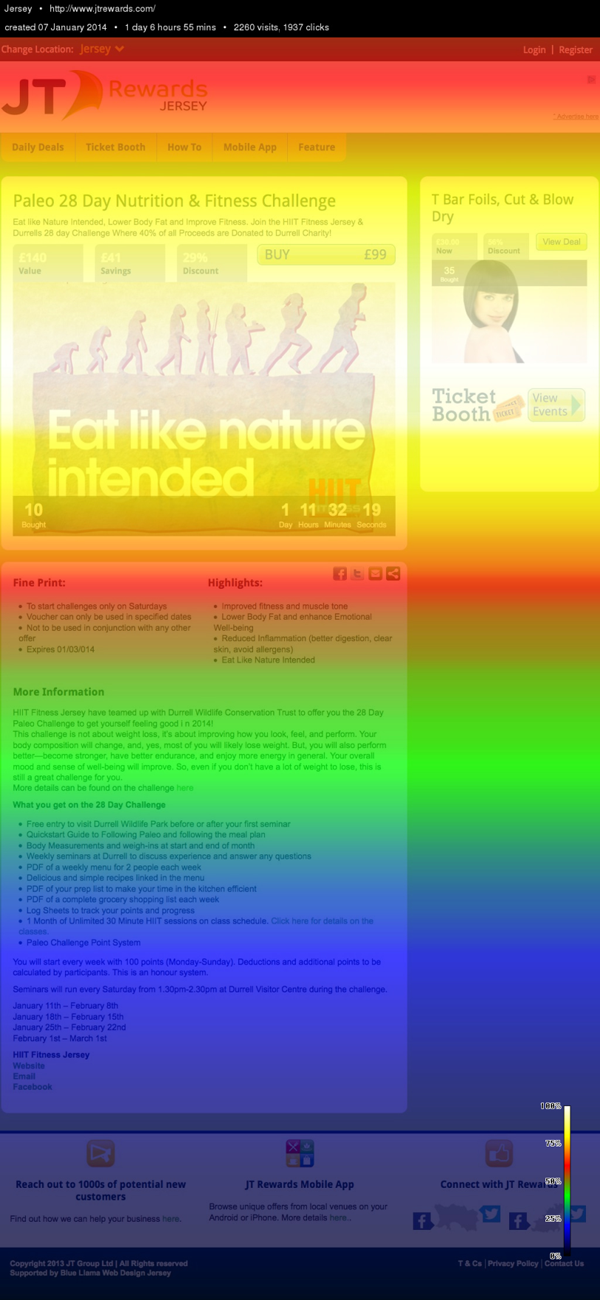The C.R.U.X of Conversion and Usability

By Joe Doveton, GlobalMaxer ::
The C.R.U.X. of the Affair: How Conversion Rate Optimization Ended Up Getting Married to Usability, Despite Them Both Hating Each Other
Those responsible for user experience (UXers) and those in charge of conversion rate optimization (CROers) are meant to hate each other. After all, many UXers have arrived in the role after years of graphic design training and exercising full artistic control over their companies' Web design. CROers are essentially analytics nerds who bring a cold and calculating data-led approach to looking at design, with an unsentimental attitude to brand guidelines.
In this article, Joe Doveton from GlobalMaxer, the leading expert in cultural conversion rate optimization, highlights that UX and Conversion Optimization are the yin and yang of a successful and dynamic approach to design management. With professional and expert UX at the heart of building a successful testing program.
Conversion optimizers - have you ever sat in a conversion meeting and had designers and developers scowling at you? Web designers - admit it, have you done the scowling? If Web designers and optimizers are natural enemies, then the brand manager is the mortal foe - the optimization equivalent of Kryptonite. One of the most fascinating things about the explosion of Web analytics over the last 10 years is how this has revolutionized all areas of digital business, from automated advertising systems to live testing on a live site. Previously, the realm of the notorious Brand Manager was out of the reach from the data police. Brand assets were laid down as if they were the 10 Commandments: THIS color, THIS font, THIS logo size - to the very last pixel. Conversion Conference curator Tim Ash has a provocative name for these people: the Brand Nazis.

Web Designer: "AB Testing? I don't need a testing platform- I can do it myself!"
The Brand Manager's world is finally being challenged by a data-driven proposition. Why? If your customers are telling you they prefer this font and this color then brand guidelines need to feed into the whole design approach. After all, the customer is always right, right?
Luckily, it doesn't have to be all out war. As the conversion optimizer has an accomplice - the UXer. The Usability expert has usually come from a design and development background, with a keen eye for new technologies and approaches. He or she is constantly looking for tips and short cuts to improve functionality while retaining style. The UXer has a whole basket of tools, tricks and approaches that help with the design process. Crucially, the UXer offers continuity with your existing design and allows CRO to flow from your existing design process and augment it - not replace it. A collaborative approach which allows the Brand Manager to retain some control and come away looking like a genius, leaving you to get on with your job. With this in mind, here are my top tips for CRO and UX success:
Shamelessly Woo Them
You need to get the Usability team onside at the earliest possible opportunity- even before the ink has dried on the wireframes. Flowers may or may not help. Becoming a tools addict is a great benefit- supplying your own wireframes and mock-ups is great, providing evidence from your own Silverback sessions is even better. Outside of corporate wireframing platforms like Axure, there are also handy low cost tools such as Balsamiq, Mockingbird or Pencil Project.
Collaborate, have fun and learn
CRO is about proving the value of a design change- more clicks, more conversions, more revenue and lifetime ROI. To be effective it has to come from a thorough evidence-based approach and collaboration with UX is vital in this process. Tests with badly defined objectives and poor design ideas will inevitably turn out with confusing results. Everyone has a valid voice. So get together in a brainstorming session with a blank sheet of paper and a stack of post it notes. Post up direct quotes of users from moderated user sessions. Brain dump ideas and then vote them in or out. Take bets or have a competition on which design or design element will win. UXers - it's your job to understand the practicalities of Web build. CROers - it's your job to beat the drum for testing and statistical analysis of results. EVERYTHING has to be tested.
Show me the analytics
Data from current analytics helps the Uxer get a benchmark for current performance. Averages of site dwell time or average page refresh rate may get the UX team thinking: "if this visitor is on the page for one minute on average and the page is dominated by a three-minute video, maybe we need to downgrade the video?" Get yourself a licence for a visual analytics platform such as Crazy Egg, Clicktale or Decibel Insights. These will help you establish where your users are clicking on the page and how far they scroll down. Helpful hint - in Western cultures, no matter how much information you want to cram on to a page, users don't scroll down much below the fold. Clicktale et al will help you visualize this.

Scrollmap from Crazy Egg
Respect- but don't worship- best practices
Best practice is great. It gives you a boundary of "normal" behavior. But your customers are not normal. They are specifically and uniquely your customers and - as Web designers and curators - you have a responsibility to give them what they want. There is no ISO standard for Web development and design. However, applying the principles of best practice gives you the starting point from which to row back from. Best practice in Web design means fast page load times, clear calls-to-action (CTAs) and a hierarchy of user actions laid out on each page, no moving content such as self-starting videos or self-moving carousels and clear brand identifiers such as logo (usually top left). These principles may not always work- but as they are based on perceived wisdom from the results of other optimizer's tests it is worth checking your own ideas against "best practice".
Test - and move on
Finally, plan groups of tests. Don't agonize over single tests and get downhearted if you don't get a clear winner. The majority of your tests will fail - fact. Adobe reckons that it loses about 90 percent of their own tests. However the improvements of the winning 10 percent more than compensates for the deficiencies of the losses. Inculcate a culture where knock-backs are the norm and are treated as part of the learning process. The losses enable you to reflect on why they didn't work and eliminate unproven ideas from the design schedule. The successes should be celebrated- but looked on as the starting point of further improvements.

Subscribe to Our Newsletter!
Latest in Marketing








